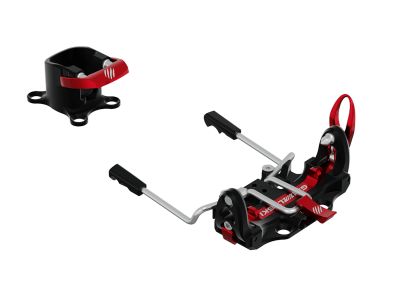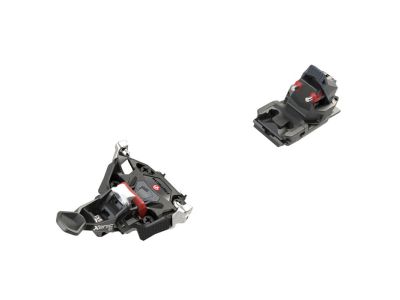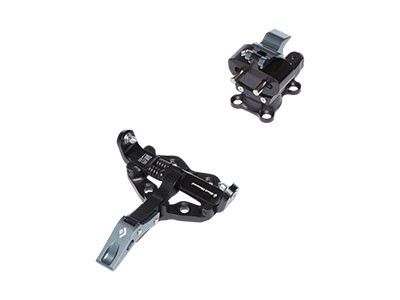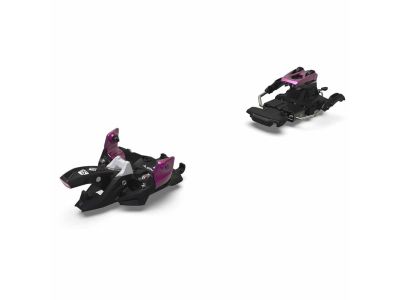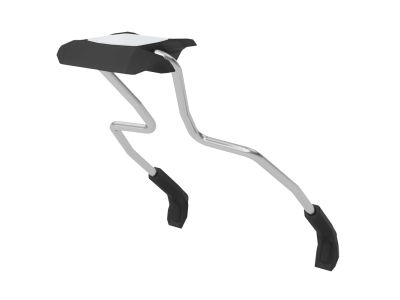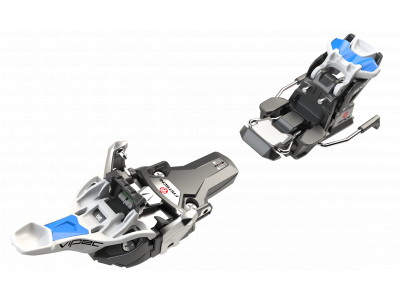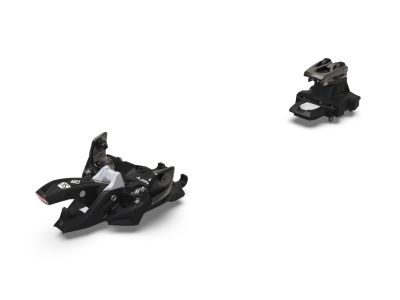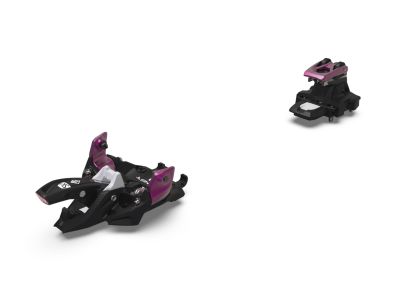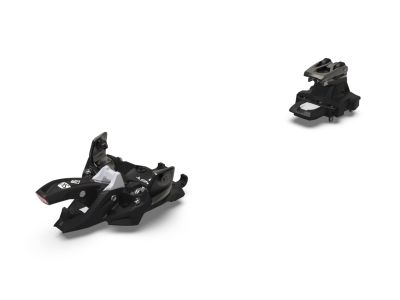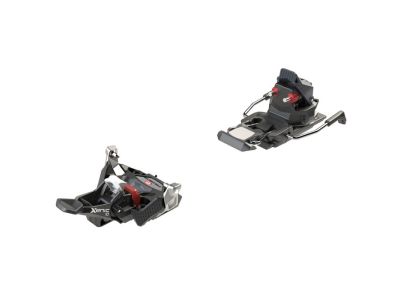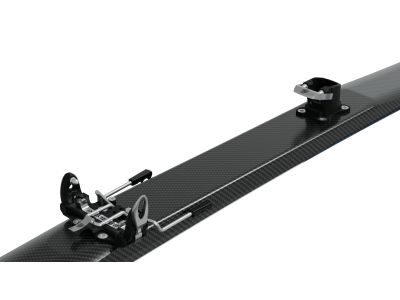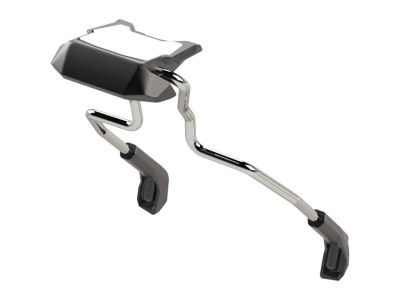Skimo bindings are specialized bindings designed for back country skiing. Unlike traditional bindings, skimo bindings allow the heel to lift off the ski when climbing uphill, allowing for a more natural walking motion. They also have a mechanism that allows the skier to adjust the angle of the foot to the slope of the terrain, making climbing easier.
Skimo bindings typically consist of two main components: the toe and the heel. The toe is designed to release the boot in the event of a fall or avalanche, ensuring safety. It also has a mechanism that can be locked or unlocked to switch between skiing and walking modes. In skiing mode, the toe section securely holds the boot on the skis. In walking mode, the toe section releases the boot, allowing for a more comfortable and efficient stride. The heel section of an alpine ski binding is the main difference compared to an alpine binding. It is designed to allow the heel to lift off the ski when climbing, allowing for a more natural walking motion. The heel section can be adjusted to different angles, allowing the skier to adjust their climbing position to be comfortable and efficient. When switching to downhill skiing, the heel section is locked back into place, ensuring a secure connection between the boot and the ski. Skimo bindings often have additional features such as brakes to prevent the skis from rolling away, crampon attachments - tough for icy or steep terrain.
How to choose skimo bindings?
There are several factors to consider when selecting a ski mountaineering binding. Here is a guide to help you choose a ski mountaineering binding:
- Determine your ski mountaineering style: Consider the type of ski mountaineering you plan to do. Do you focus primarily on uphill climbs and long hikes, or do you prefer downhill? This will help you decide between a lightweight touring binding or a more robust freeride touring binding.
- Consider your skiing ability: Skimo bindings are typically categorized by DIN (Deutsches Institut für Normung) settings, which indicate the force required to release the boot from the binding. Determine your ability level and choose bindings with the appropriate DIN settings to ensure proper release and safety.
- Evaluate your boot compatibility: Skimo bindings are designed to fit specific types of boots, such as Tech (pin) or Frame (frame) bindings. Make sure your boots are compatible with the binding you're considering. Tech bindings are lighter and provide better efficiency on the climbs, while Frame bindings offer better performance on the descents.
- Consider your skiing goals: Determine whether you're focused on maximizing climbing efficiency or downhill performance. Lightweight technical bindings are ideal for long tours and climbing efficiency, while frame bindings offer better power transfer and stability for aggressive downhill skiing.
- Weight and binding features: Skimo bindings vary in weight and other features. If saving weight on long hikes is your priority, consider lightweight technical bindings. However, if you value other features, such as ski brakes or compatibility with hardtails, choose a binding that offers these features.
How can I choose a binding with the correct DIN?
The DIN on ski bindings determines the force required to release the boot from the binding. It is important to choose a DIN that matches your skiing ability, weight, and aggressiveness. Heavier skiers typically require higher DIN values to prevent unintentional release, while lighter skiers may need lower DIN values to ensure proper release when needed.
Can I use skimo bindings for skiing in the resort?
Although skimo bindings can be used for resort skiing, they are primarily intended for back country skiing. Skimo bindings may not offer the same level of downhill performance or safety as traditional alpine bindings.
Are skimo bindings compatible with all ski boots?
Skimo ski bindings come in a variety of models and may have specific compatibility requirements. It is essential to check the compatibility of your boots with the binding you are considering. Technical bindings require boots with technical inserts, while frame bindings generally have more compatibility options.
Can I use skimo bindings with different ski widths?
Skimo bindings come in different widths to accommodate different ski widths. It is important to choose a binding that matches the width of your skis. For proper functionality and safety, the width of the binding brake should match the width of your skis.


